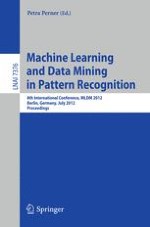2012 | OriginalPaper | Buchkapitel
How Many Trees in a Random Forest?
verfasst von : Thais Mayumi Oshiro, Pedro Santoro Perez, José Augusto Baranauskas
Erschienen in: Machine Learning and Data Mining in Pattern Recognition
Verlag: Springer Berlin Heidelberg
Aktivieren Sie unsere intelligente Suche, um passende Fachinhalte oder Patente zu finden.
Wählen Sie Textabschnitte aus um mit Künstlicher Intelligenz passenden Patente zu finden. powered by
Markieren Sie Textabschnitte, um KI-gestützt weitere passende Inhalte zu finden. powered by
Random Forest is a computationally efficient technique that can operate quickly over large datasets. It has been used in many recent research projects and real-world applications in diverse domains. However, the associated literature provides almost no directions about how many trees should be used to compose a Random Forest. The research reported here analyzes whether there is an optimal number of trees within a Random Forest, i.e., a threshold from which increasing the number of trees would bring no significant performance gain, and would only increase the computational cost. Our main conclusions are: as the number of trees grows, it does not always mean the performance of the forest is significantly better than previous forests (fewer trees), and doubling the number of trees is worthless. It is also possible to state there is a threshold beyond which there is no significant gain, unless a huge computational environment is available. In addition, it was found an experimental relationship for the AUC gain when doubling the number of trees in any forest. Furthermore, as the number of trees grows, the full set of attributes tend to be used within a Random Forest, which may not be interesting in the biomedical domain. Additionally, datasets’ density-based metrics proposed here probably capture some aspects of the VC dimension on decision trees and low-density datasets may require large capacity machines whilst the opposite also seems to be true.
